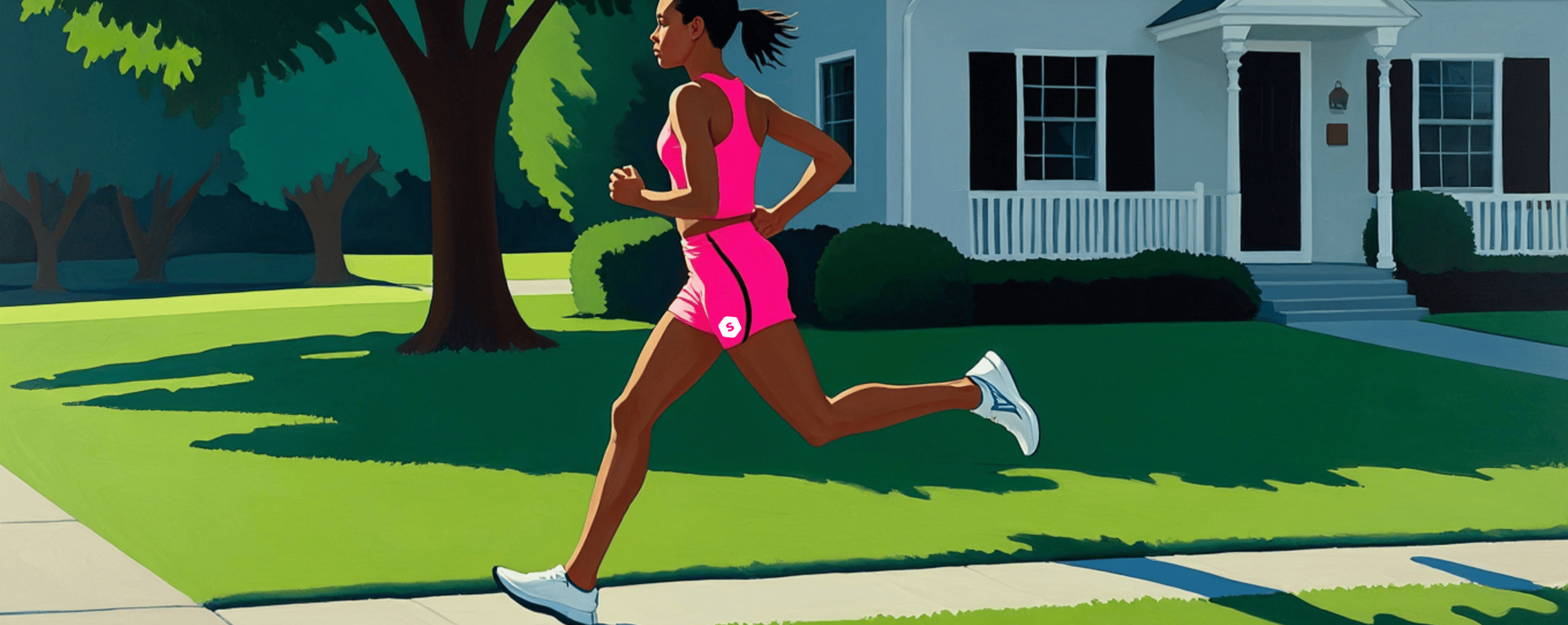Every run is a work of art, a drawing on each day's canvas. Some runs are shouts and some runs are whispers. Some runs are eulogies and other celebrations.
Dagny Scott Barrios
Running isn’t always easy - but it shouldn't have to be so scary either. Maybe you're totally new, maybe you're getting back into it, regardless, this guide was made to help you figure out how and where to start. Ready to give it a shot? Let’s get into it!

Who Is This Guide For?
Running is undeniably one of the most universal and inclusive forms of physical activity. So much so that it is often celebrated as one of the most accessible sporting activities there is, requiring no more than the bare minimum to get going!
However, as with any sport, running still presents challenges that might deter some people. In creating this article, we hope to provide guidance for beginners, casual runners and aspiring athletes alike through their running journey. Not everyone will be looking to start running for the same reason, perhaps you're simply hoping to kick start a little weight loss, or as a senior you're looking for a new way to stay physically active.
Running transcends physicality, and in turn so do it's benefits! This guide may also be advantageous for those looking to start running for mental health purposes, for those aiming to channel their stress, find mental clarity or combat their anxiety.
What Are the Benefits of Running? ✨
It's no secret that running boosts a whole host of benefits for your health: they can be physical, mental and/or emotional, Embracing the runner’s lifestyle is bound to transform your daily life and push you to grow in multiple ways. Here's a list of all the benefits you can reap from running:
🏃 Improves Cardio Health
Strengthens the heart and lungs, reducing the risk of heart disease.
💪 Weight Management
Burns calories efficiently, aiding in fat loss and muscle toning.
🩸 Boosts Circulation
Helps regulate blood pressure and improve overall circulation.
🦴 Strengthens Joints
Moderate running can improve bone density and joint health.
🧘 Reduces Stress
Releases endorphins, which help relieve stress and symptoms of anxiety.
😃 Combats Depression
Many runners experience the “runner’s high,” a natural sensation that feels great!
🛌 Boosts Your Sleep
Helps regulate sleep cycles and promotes deeper rest.
⏳Improves Your Mood
Regular running can make you feel more energised throughout the day.
🎯 Builds Discipline
Setting running goals can improve self-discipline that affects other areas of your life.
🌳 Enjoy the Outdoors
Running is a great way to explore nature and spend more time outside.
🤝 Community Spirit
Running clubs offer social opportunities and sense of community.
💥 Pushes Your Limits
Running is a way to challenge yourself physically and mentally.
Common Myths and Misconceptions: Thoughts That Might Be Holding You Back 💭
If you are looking to start running but can't shake the excuses in your head, don't let it discourage you! Before you start, it is important to clear up some of these myths and misconceptions:
- "You need expensive shoes to start running": 💰 It's true that a good pair of running shoes is a huge plus, but there are many good trainers on the market for less than $100. Fancy watches, compression gear, and high-tech clothes are totally optional extras.
- "Running ruins your knees": 🚫 False! Or, at least, not necessarily! Studies show that regular running actually strengthens your joints and reduces the risk of osteoarthritis1. As we'll see later, the key to avoid injury is proper form, gradual progression (avoid overtraining) and cross training.
- "You must stretch before running": 🤸 There are subtleties here! Yes, doing traditional static stretches before running helps improve flexibility and range of motion2. But pairing this with dynamic stretching exercises such as leg swings, lunges, skips, etc, that's where the runner will really reap the rewards of the warm-up, preparing the body by doing movements that emulate those performed during the run.
- "Running is only for young people": 👵 No way! Many people take up running in their 40s, 50s, or even later. There are runners in their 80s completing marathons!
- "You need to run every day": 📅 Not true! Rest days are essential for recovery and injury prevention. Overtraining increases injury risk, so listening to your body and including strength training can help prevent injuries. Most runners that train 3-4 times per week see improvements on their performance.
- "Running on a treadmill is easier than running outside": 🌳 Not always! Treadmill running lacks wind resistance and terrain variation, but it can be just as hard (especially if you add an incline).
- "Running alone will help you lose weight": 🍔 Not exactly! Running burns calories, but diet plays a huge role in weight loss3. A balanced diet plus running is the best approach.
Unsure about your current running level? Take this quick running quiz to find out where you stand and get the most out of our guide!
Getting Started - Preparation Is Key
Success in any endeavour often hinges on one crucial factor: preparation. Whether tackling a major exam, starting a new job, or facing any other life challenges, being well-prepared will increase your confidence, in turn enhance your performance and of course, reduces nerves and stress - approaching your running goals should be no different!
By failing to prepare, you are preparing to fail.
Benjamin Franklin
Ultimately, preparation is not just about getting ready; it is about setting oneself up for success, whatever the endeavour.
Mindset & Motivation 🧠
Why do you want to start running? There are plenty reasons why someone might want to start running. Maybe you watched your first marathon live, maybe your colleague came to the office bragging about having joined a new run club, maybe you saw a stylish pair of running shoes that made you want to give the sport a go.
people actively run as a form of sport or exercise.
Whatever your initial motivation is, it is important to keep in mind that, level and lifestyle dependent, starting your running journey might not be easy. Therefore, staying positive and setting realistic goals is extremely important!
Overcoming the Initial Fear or Discomfort of Running
An inept fear of running is quite common and can stem from various physical, psychological, or past experiences. Some people worry about injury, breathlessness or their endurance limits, while others feel self-conscious about their pace, performance or appearance.
One way to overcome this initial fear might be to prepare adequately, set realistic goals and seek support from others: you'll be surprised how much easier and encouraging it is to start running if you're doing it with a friend or if you join a running group!

Building a Positive Mindset for Consistency
When it comes to running, as in other areas of life, consistency is the key to long-term success.
However, staying consistent requires a strong, positive mindset. This will help you navigate challenges (there will be some!), stay motivated and enjoy your journey.
The idea is not to ignore difficulties but to approach them with confidence and resilience, reframing negative thoughts that might pop up in your head.
Over time, with the right mindset, positivity will become a habit!
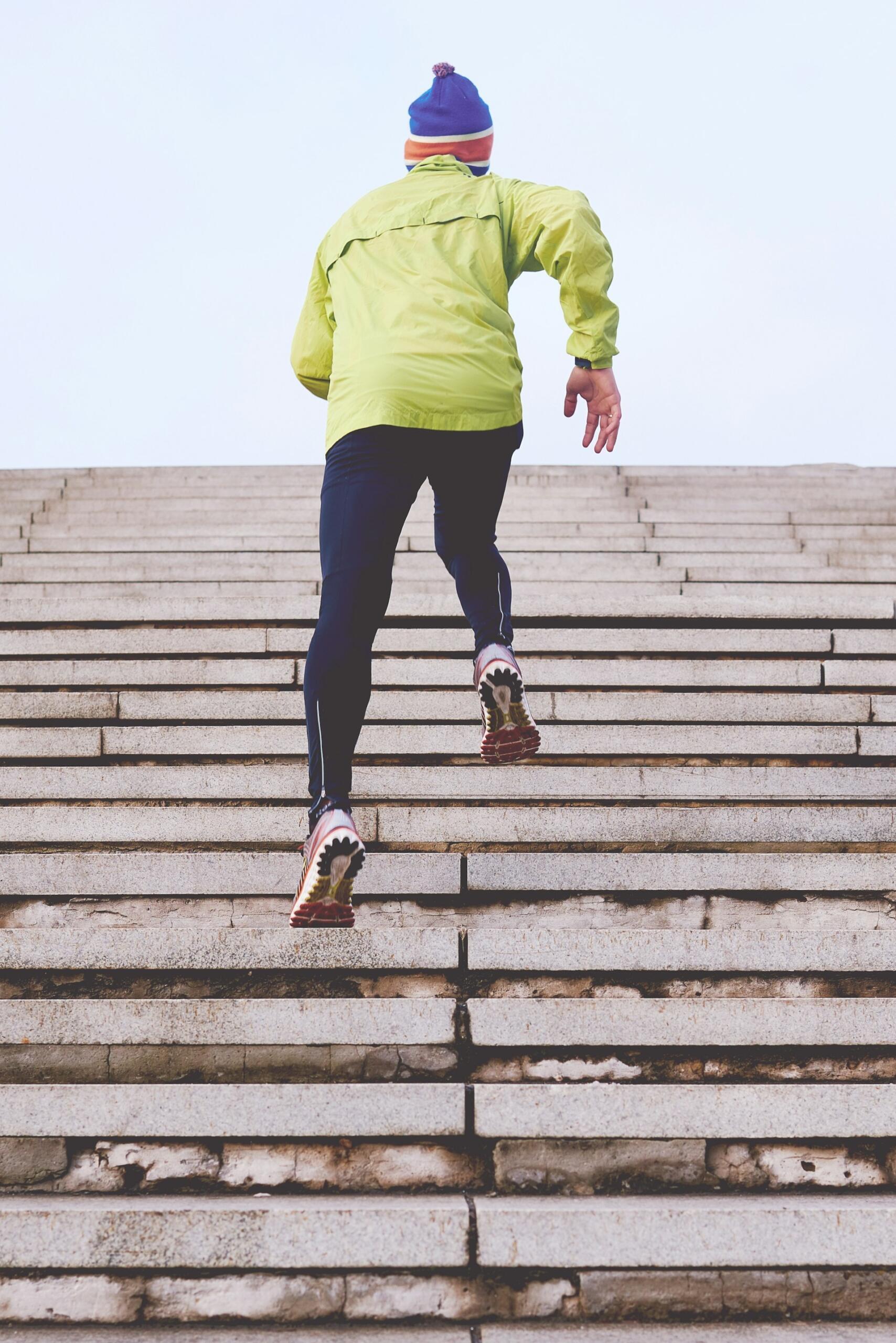
Never Ran in Your Life? You Might Want to See a Doctor First
If you are considering starting to run but you're not very physically active and you've never run before, it might be a good idea to check in with a doctor first. This advice becomes even more important if you have any pre-existing health conditions, joint pain or concerns about your current fitness level. A medical professional can assess your respiratory and cardiovascular health, along with your general physical condition - suggesting the best way to ease into running safely. Running is a fantastic way to boost fitness, but taking precautions can help make the experience safe and enjoyable!
Taking the First Steps (Literally!)
Now that we have went through the basics and essentials to get you prepared to start running, it is time to actually go out on the street and start! But before you take your first steps, here are some key points to note.
Warming Up is Essential 🔥
It's no secret and many studies have proven that a proper warm-up prepares your muscles and increases heart rate to help prevent injuries and boost performance, regardless of the activity to follow. When it comes to running, you might be tempted to just lace up your shoes, open your front door and set off... However, if you skip a proper warm-up, you might be holding yourself back from being as good as you can be.
There are three groups of exercises that you can and should focus on at the beginning of each session: dynamic mobility, dynamic stretching and running-specific drills. Altogether, they shouldn't take more than 15 to 20 minutes of your training session. If you're short on time, even a quick 5-minute warm-up can prepare you better than nothing for your run.
Dynamic Mobility
Dynamic Stretching
Running-Specific Drills
Dynamic mobility helps to loosen up your body, to open up tight hips and promote mobility. Some of the core exercices are:
- Arm circles
- Shoulder rolls
- Leg swings (front & sideways)
- Hip circles
- Bodyweight squats
Dynamic stretching helps with range of motion and really prepares your muscles, ligaments and other soft tissue for running. Some of the best exercises here are:
- High knees
- Butt kicks
- Toy soldiers (leg kicks)
- Lunges (front & sideways)
- Knee hugs
Finally, running-specific drills activate your calves, hamstrings and other muscle groups necessary for the movements you're about to perform during your run - this is the final part of your warm-up, after which you'll be ready to get going:
- Skipping exercises
- A-skips/B-skips
- 10 second light sprints
Building a Running Strategy 🧱
For first-time runners, actually stepping outside and start running can feel intimidating. Most beginners use the walk-run method: all you have to do is to alternate between running and walking at timed intervals.
The following structure is a common approach for first-time runners:
- Week 1: Run for 30 seconds, walk for 2 minutes (30 minutes total)
- Week 2: Run for 1 minute, walk for 1.5 minutes (30 minutes total)
- Week 3: Run for 2 minutes, walk for 1 minute (30 minutes total)
- Week 4: Run for 3 minutes, walk for 30 seconds (30 minutes total)
The idea is to gradually tip the ratio of running to walking. The walking is a form of active recovery, and can be a simple and effective way to avoid injury and boost motivation.
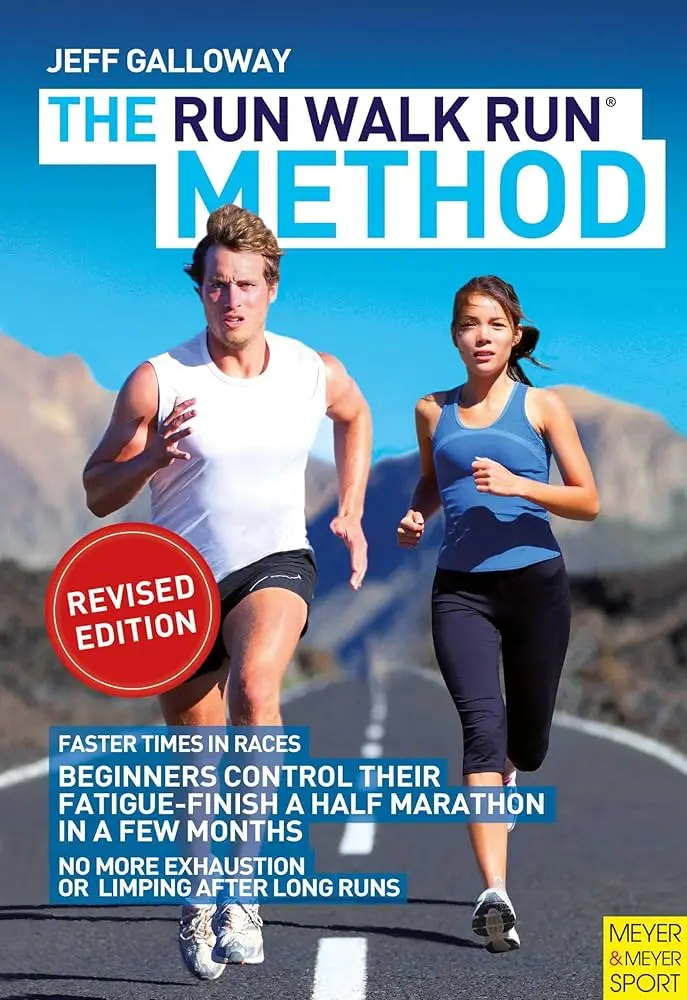
Using the walk-run method can also help break up long distances into manageable amounts - following this example, within 6-8 weeks, you should aim to run continuously for about 20-30 minutes.
Increasing Distance and Pace Safely
As you begin to get more comfortable with running longer distances or for a longer period of time, it is important to start tracking your progress so that you can keep gradually increasing your mileage, while still challenging yourself every week.
Building up the distance forces your body to adapt on both a physiological and molecular level, which in turn can make you a much more energy efficient and faster runner. New runners who ramp up their volume too fast are especially vulnerable to overuse injuries, but even seasoned runners can get hurt from increasing their mileage too quickly.
Runners should follow the general 10% rule: calculate what 10 percent of your weekly distance is and increase it each week by no more than that amount.
If you usually run 15mi per week, you shouldn't increase your mileage by more than 1.5mi the following week.
Another useful tip is to give your body a "rest week". In the same way that you shouldn’t run hard every day, you probably shouldn’t try to increase your distance every week. You can adopt the following strategy: increase your distances for three consecutive weeks, and then take the fourth week “off,” by running a lower weekly mileage or even doing fewer running sessions. Focus on listening to your body and understanding how it reacts to the training schedule.
Choose an Appropriate Route
As important as the methodology is, choosing an appropriate running route should be a priority before even lacing up your running shoes.
A few considerations to keep in mind as you plan your route are:
- Surface: There are many options, such as paved roads & sidewalks (common and accessible, but can be hard on joints), running track (soft impact and controlled distances), trail or grass (soft on the body but can be uneven), or treadmills (best option for bad weather or controlled pace training). In the end, it comes down to personal preference and your personal goals!
- Safety & Comfort: Prioritise well-lit, low-traffic areas that are free from obstacles and air pollution, such as public parks, running trails, or quiet streets with sidewalks are ideal.
- Elevation: Flat routes are best for beginners, helping to build endurance, while hills and inclined routes are a great option for strength training.
- Length & Amenities: Pick a loop route to avoid backtracking and plan a safe turnaround point; check for water fountains, restrooms or benches/shade (in case of a break).
Running apps are definitely a useful tool for choosing an appropriate route for your goals.
Running Techniques & Form 🏃
At the core, running is all about getting from point A to point B as fast as possible. Therefore, one might argue that the best running technique is the one that allows the athlete to do this as quick as possible. While that is not necessarily wrong, from a bio-mechanical point of view there are usually plenty of things almost everyone (and specially beginners) can improve to make their running technique more efficient (at least in theory) and consequently faster!
Besides making you a faster runner, improving your technique can also help reduce the risk of injury - bad running form can have painful consequences on your body, especially your joints (knees and ankles) and back.
First, you should focus on your posture: an upright posture with a slight forward lean (coming from the ankles) will unsure an efficient and fluid forward acceleration. Having a good core strength (abs and lower back) is extremely important and will help you stabilise your whole body.
In addition to this, you should also keep your head up and look forward, instead of down, and avoid hunching or tensing. Your shoulders should be relaxed and the arms should swing naturally, forward and back - ideally the elbows would be bent at about 90 degrees. Avoiding excessive side-to-side movement will keep you from unnecessarily wasting energy.
When it comes to cadence, avoid excessive flexion through your joints as you land. Focus on a snappy and fast cadence, instead of a labored overstriding: a pronounced flexion of the joints (ankle, knee, hip) reduces the impact shock but decreases your rebound and makes you slower. Each stride should land midfoot and under your center of gravity, not in front.
Breathing Techniques
Unsurprisingly, breathing is crucial for a relaxed and efficient run. The key is to take deep breaths using your diaphragm, rather than shallow chest breathing. Why? Because diaphragmatic breathing (through your belly) allows for a deeper, more efficient oxygen intake, as well exhaling air fully helping you remove carbon dioxide and prepare for the next breath. If you're unsure, practice lying down with one hand on your chest and another your stomach.
For slower runs, it is optimal to breathe in through your nose and out slowly through your mouth to regulate airflow - you should technically be able to have a conversation with a running buddy at this pace and respiratory rate. On the other hand, for faster runs or during intense efforts you can use both your nose and mouth to maximize oxygen intake if necessary.
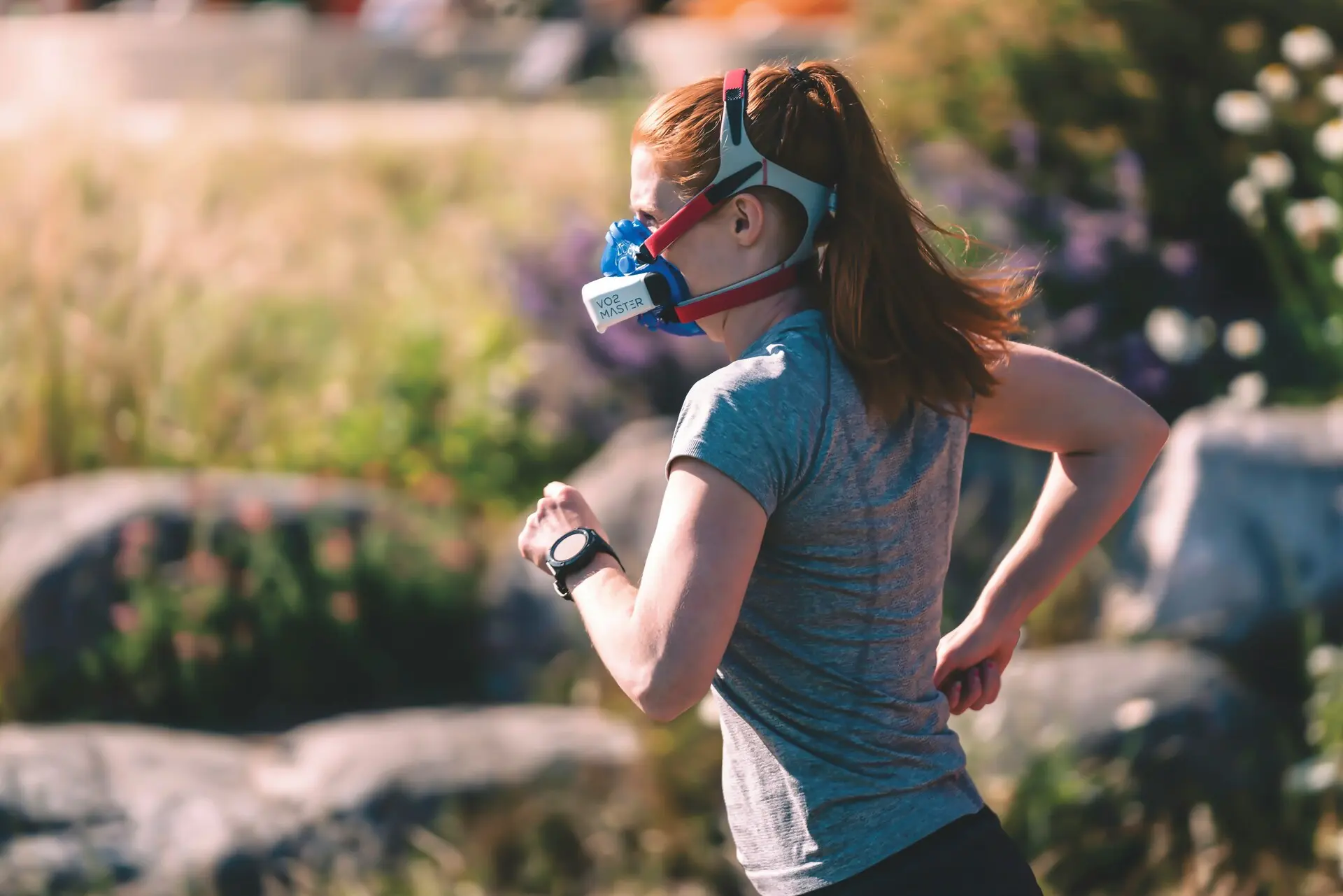
Advanced runners often use rhythmic breathing, syncing their breaths with the strides which helps distribute impact forces more evenly.
Pace dependent, you can try out patterns of 3:2 (inhale for three steps, exhale for two), 2:2 (inhale for two steps, exhale for two) or 2:1 (inhale for two steps, exhale for one).
Structuring Your Running Plan 📝
Now that you're starting to get familiar with the basic running techniques and that you've taken the first steps towards creating a running habit, naturally you're going to want to improve and progress in the sport, this is where having a plan comes in real handy!
Depending on your goals and level of experience, if you really want to boost your performance you may want to implement more tailored workouts into your routine - there are several types of running workouts out there, each designed to improve different aspects of your game, such as form, endurance or speed. Here's a quick rundown of some of the most popular running workouts.
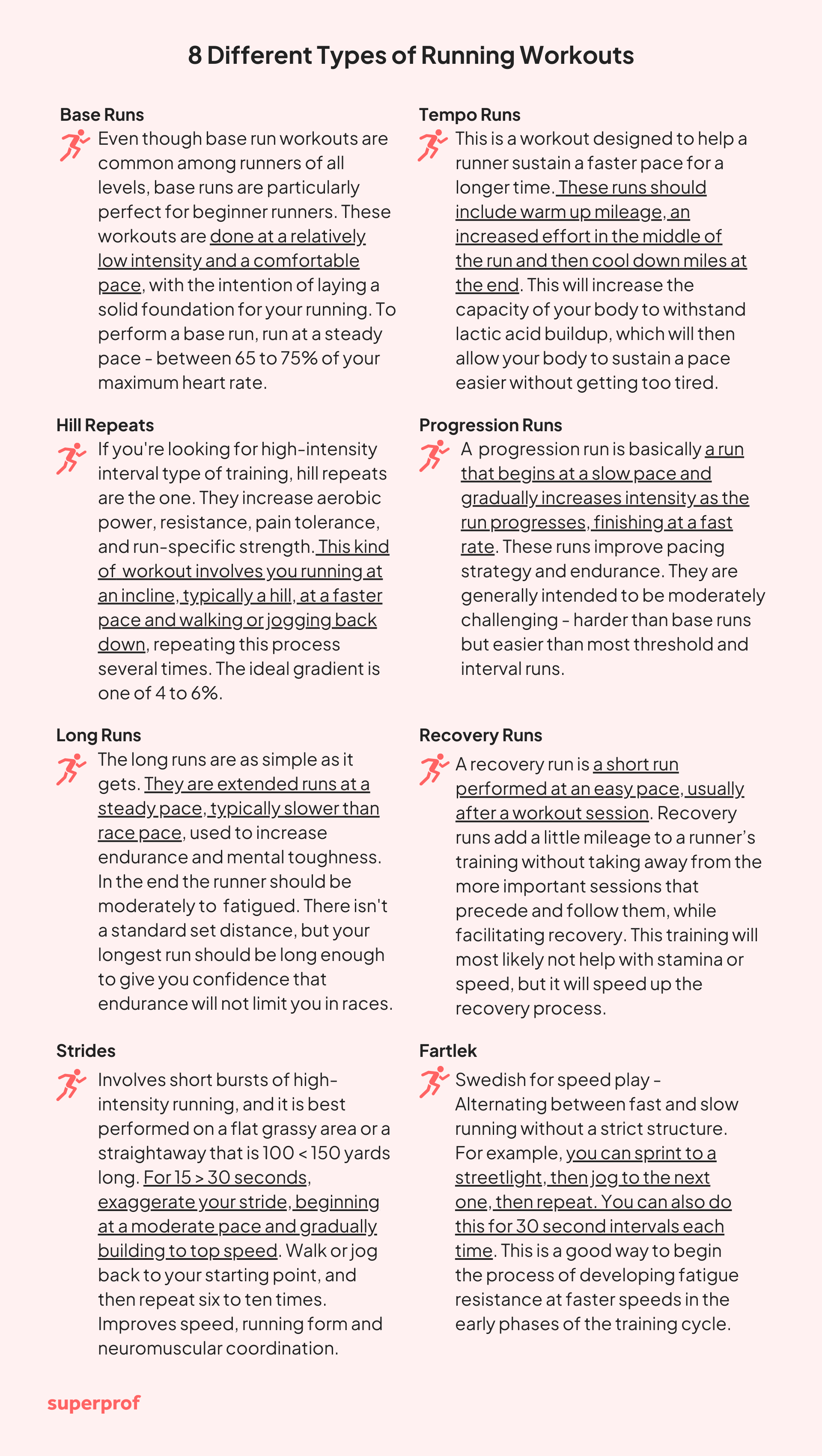
How Many Hours Per Week Should You Run?
In case you're taking your first steps in your running journey, you might be wondering how many hours per week you should dedicate to it. Obviously, the number of hours or training sessions depends on different factors - your experience level, current physical shape, goals, etc - so the best is to start progressively and listen to your body after each and every running session. In any case, it is recommended to increase volume gradually: don't forget the 10% rule to avoid overtraining, or worse, injury!
In general terms, beginners (0-4 months of running) shouldn't need more than 2-4 hours per week of running to start building a consistent routine. Intermediate athletes (4-24 months running) are advised to implement a schedule of 4-6 hours per week in order to improve speed & endurance while staying motivated throughout the whole journey.
On the other hand, advanced runners or those preparing for races should be able to benefit from a schedule of 6-10+ hours per week of running. In this case, it is especially important to have structured workouts and a strong recovery plan. In some cases, athletes preparing for a marathon can run over 12 hours per week!
Recovery
Recovery is essential for runners, as it is for those who practice any physical discipline, this is the case because recovery allows the body to really repair, rebuild itself, adapt to the re-occurring stresses of training and be better. Underestimating or undervaluing recovery can lead to chronic fatigue, all types of injury and ultimately stagnation in progress. Remember what happened when the tortoise raced the hare? Consistency through recovery will always prevail over rushing to the finish line.
Equally as important as recovery is proper nutrition!
Benefits of Proper Recovery 🧘
- Hormone balance and immune support - prevents burnout, illness and supports mood
Running taxes the body a lot, which can eventually impact your hormonal balance if proper recovery isn’t prioritized. High intensity training can spike cortisol levels (cortisol is the stress hormone) and if cortisol becomes chronically high, it can weaken and even suppress your immune system totally.
Recovery helps stabilise neurotransmitters, such as serotonin and dopamine, which are critical for maintaining a positive outlook.
- Glycogen replenishment - restores energy levels and prevents fatigue in future training
Glycogen is the body’s primary source of energy during endurance activities such as running. Prolonged or more intense running workouts deplete glycogen stores in your muscles - without appropriate glycogen replenishment, your body will surely struggle to fully recover, leaving you feeling sluggish and unmotivated.
When 24 hours of rest occur between exercise sessions, ingesting a total of 10 g/kg BW, along with enough energy (calories) to maintain energy balance, will maximise glycogen restoration.4
Prioritizing recovery will train your muscles to efficiently absorb and store carbohydrates, rebuilding your glycogen reserves. This both preps you for your next workout, whilst also curbing potential cumulative fatigue!
- Adaption to re-occurring strain - reduces the risk of chronic, long term injuries
Running puts a lot of stress on your muscles, tendons and joints. As time goes on, without practising proper adaptation or recovery, this will surely lead to chronic injuries like tendinitis, stress fractures, or plantar fasciitis. Implementing proper recovery helps your body adapt to this re-occurring strain by insuring that muscle tissue becomes more resilient.
But How Do I Actually Do It? 🤷
There are million ways to recover, especially in this day and age, the spectrum of recovery treatments and clinics is enormous, it can be hard to know which actually serve you - so here are some simple ways you can recover both from the comfort of your own home, or by seeking help farther afield:
Recovering From the Comfort of Your Own hHme
Recovery Options:
- Self massage, by hand or with a massage gun/machine 💆
- Take a hot bath, or a cold one ❄️
- Stretch 🤸
- Sleep, sleep, sleep! 💤
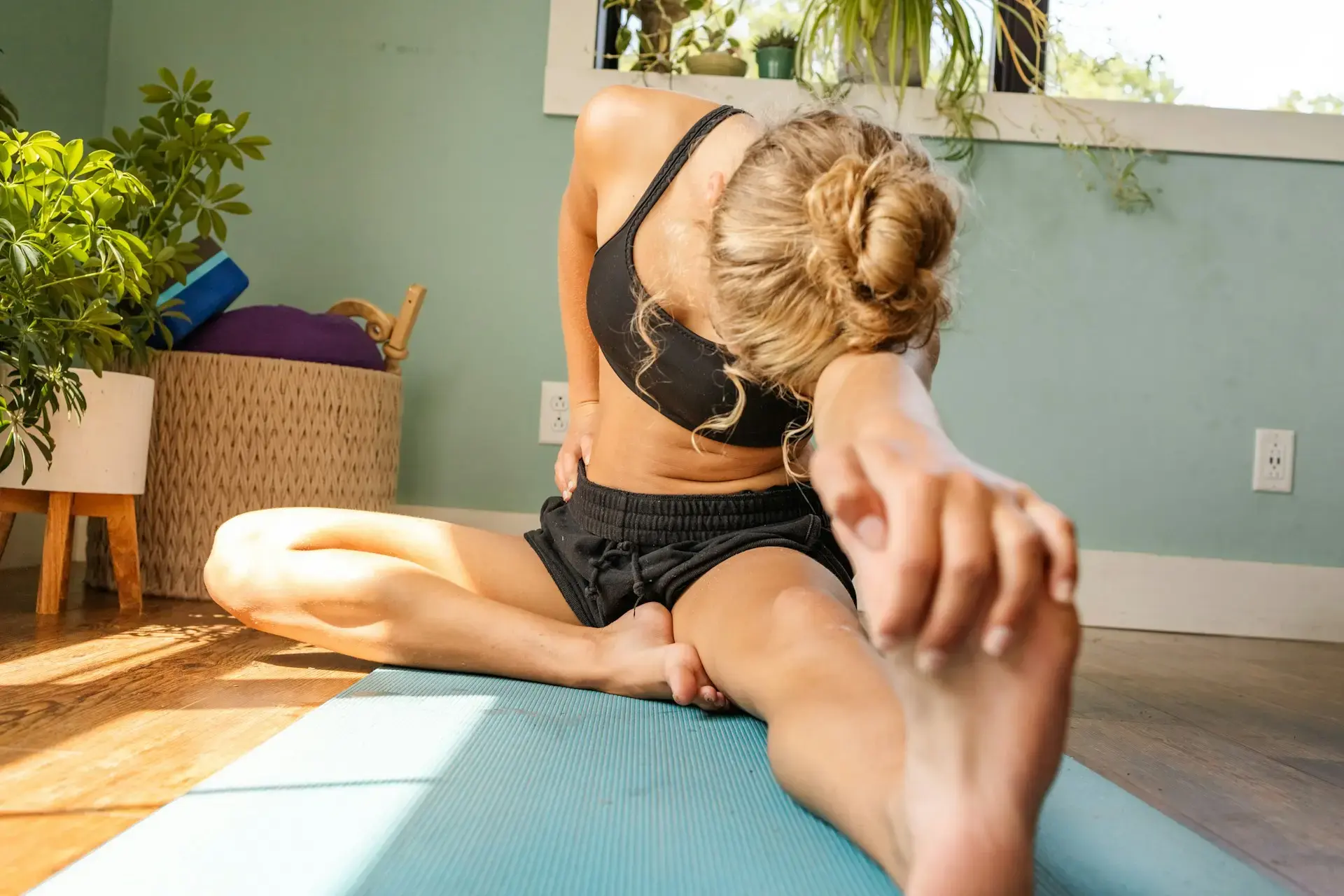
Seeking External Recovery, Higher Intensity Recovery Options?

Recovery options:
- Visit a spa for a sports massage 🧖
- Visit a cold plunge centre 🧊
- Visit a sauna ♨️
- Go to a relaxed yoga class 🧘
Today, there is a lot of hype surrounding the use of hot and cold therapy as a recovery technique, unspecific to runners, sauna and cold plunge are all the rage among athletes and casuals alike.
Wim Hof, also known as "The Iceman," has a pretty cool (literally!) take on the whole thing. His method mixes slow and controlled breathing to enhance oxygenation of the body with cold therapy to combat inflammation and muscle soreness, but more than anything - build mental fortitude and composure through meditation.
From Joe Rogan and Kevin Hart to Jessica Biel and the legacy of Wim Hof, it's hard to know who to trust, so we've included a few resources here to allow you to make up your own mind, but if you really want to know if it works... you'll have to brave the ice!
Most Common Beginner Running Injuries and How to Avoid Them 🏥
Running injuries are often caused by over-training, bad form, poor recovery or ignoring an ongoing problem! With common issues including runner’s knee, shin splints, Achilles tendinitis, plantar fasciitis, and stress fractures and even blisters - avoiding injuries like these usually involves gradually increasing training load (as opposed to jumping the gun), using proper gear and prioritising warm-ups, stretching, and recovery practices.
A study of over 2,000 running-related injuries, found Medial Tibial Stress Syndrome (Shin Splints) to be the most common.5
The Role of Strength Training in Injury Prevention for Runners 🏋
Strength training isn’t just for gym-goers, cross-training (involving other forms of exercise in your routine) and keeping your supporting muscles strong, aids in injury prevention by reducing repetitive strain and really solidifying your overall muscular and physical resilience.
Whether you're training for a marathon or just enjoying a morning jog, incorporating strength exercises can help you stay injury-free and make the most of your running journey.
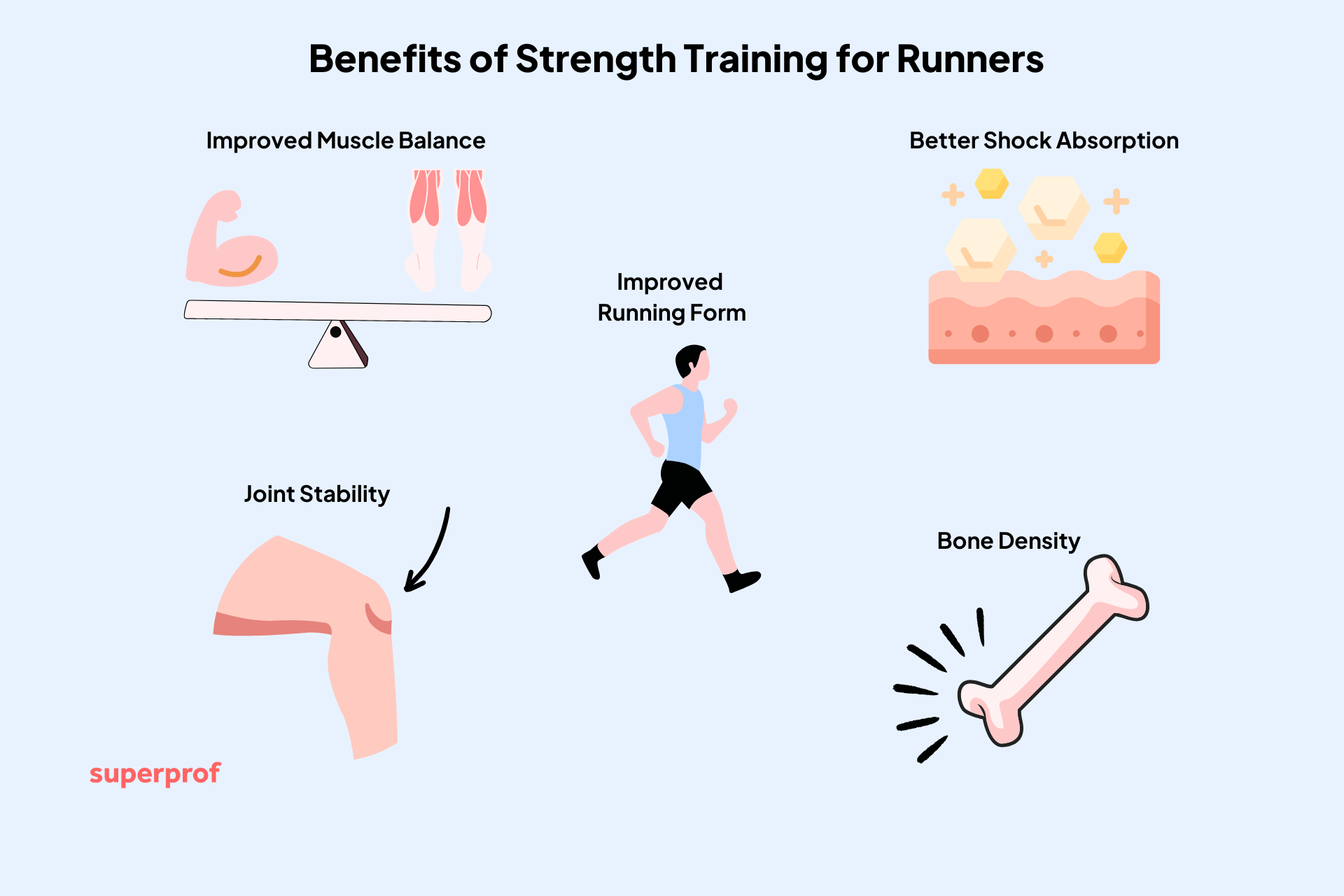
We recommend you prioritize dynamic weight loaded movements to build those supporting fast twitch muscles, at the same time as those bigger more dominant slow twitch muscles - but don't take our word for it, here's a quick video:
While some runners are afraid to put on weight that can slow them down while running, as long as you limit the weights, focus on volume and eat accordingly - you can only benefit.
Stick to classic compound legs and core exercises:
- Squats
- Lunges
- Deadlifts
- Pistol squats
- Leg raises
- Calf raises
- Hip thrusts/bridges
- Pull-ups
- Press-ups
- Planks
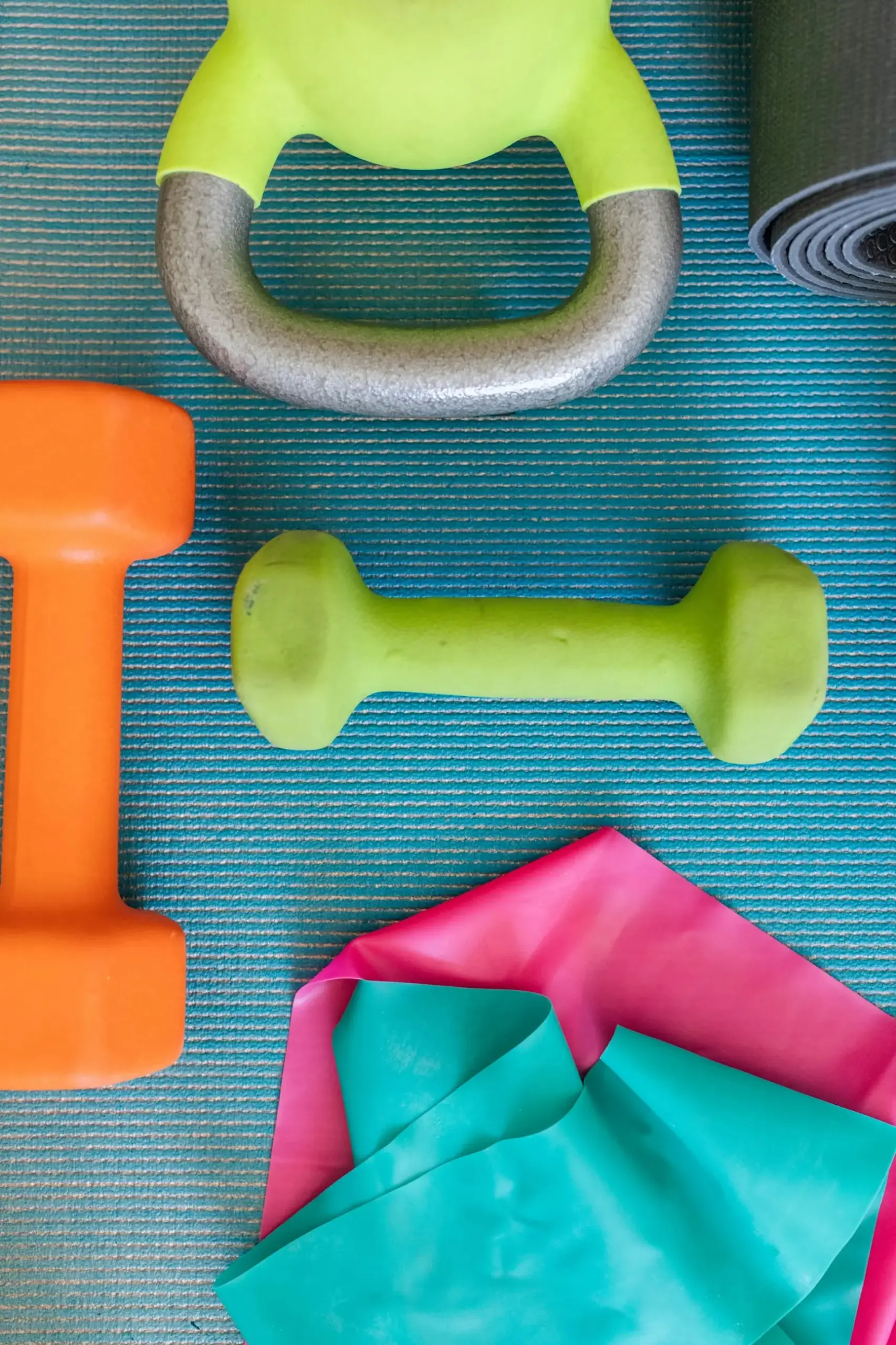
Conclusion & Next Steps
Setting out on the journey that is becoming a runner, resembles opening the door to a better version of yourself. It’s not just about lacing up and hitting the pavement, it’s discovery, it's learning more about yourself, your mental capacity, pushing past limits, growing along the way and embracing a lifestyle that benefits both your body and mind.
By understanding the fundamentals, from choosing the right gear to locking in your running form, while setting yourself up for success with a structured, catered training plan that brings on board proper preparation, nutrition and recovery, you can't go wrong!
Keep in mind, running isn't about being perfect, it's about progression, one foot in front of the other - learning to celebrate the small victories, stay patient, and more than anything, just keep pushing forward a life lesson personified. 🌱

Enjoy the Process and Have Fun Running! 🏃💨
Having taken the time to read this guide, you're already one step ahead, now it's time to put words into action. Whether it’s the pride of logging your first mile, the goal of crossing a finish line or that sweet runner's high, the opportunities are endless.
So let's go! Start running today and let this be the beginning of an incredible journey. 🌟
References
- Alentorn-Geli, E., Samuelsson K., Volker, M., Green, C., Bhandari, M., Karlsson J. (2017). The Association of Recreational and Competitive Running With Hip and Knee Osteoarthritis: A Systematic Review and Meta-analysis. https://pubmed.ncbi.nlm.nih.gov/28504066/
- Faelli E., Panascì, Marco., Ferrando, V., Bisio, A. (2021). The Effect of Static and Dynamic Stretching during Warm-Up on Running Economy and Perception of Effort in Recreational Endurance Runners. https://pubmed.ncbi.nlm.nih.gov/34444136/
- Young Kim, J. (2020). Optimal Diet Strategies for Weight Loss and Weight Loss Maintenance. https://pmc.ncbi.nlm.nih.gov/articles/PMC8017325/
- Murray, B. and Rosenbloom, C. (2018). Fundamentals of Glycogen Metabolism for Coaches and Athletes. Nutrition Reviews, [online] 76(4), pp.243–259. doi: https://doi.org/10.1093/nutrit/nuy001.
- Gallo, R.A., Plakke, M. and Silvis, M.L. (2012). Common Leg Injuries of Long-Distance Runners. Sports Health: A Multidisciplinary Approach, 4(6), pp.485–495. doi: https://doi.org/10.1177/1941738112445871.
Your Personal training tutor is waiting for you on Superprof!
Want to give it a try?
Let our experts impress you!

